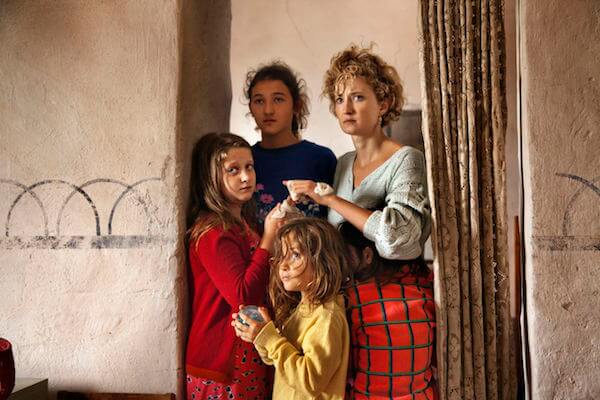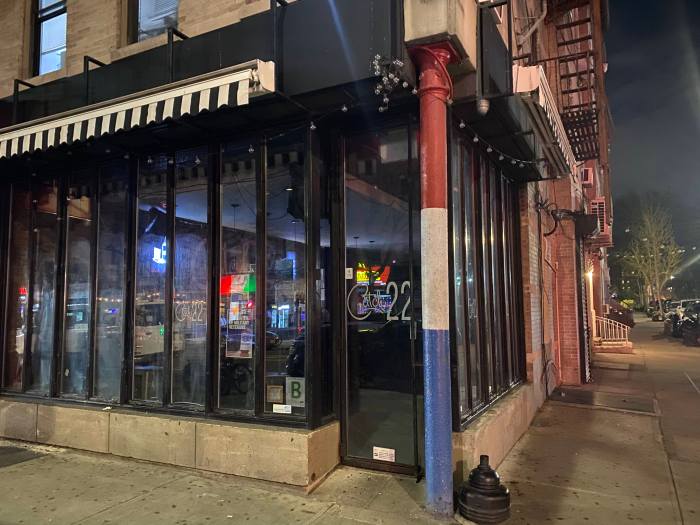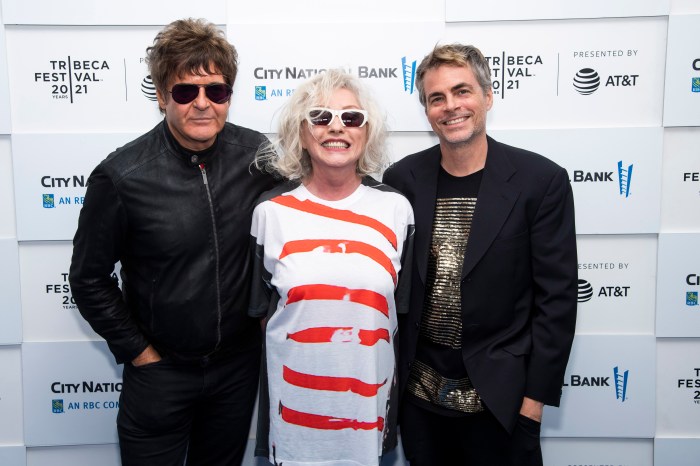Maika Monroe in David Robert Mitchell’s “It Follows.” | RADIUS-TWC
David Robert Mitchell’s “It Follows” takes the sexual anxiety from John Carpenter’s “Halloween” and lifts it from subtext to subject matter. A return to the body-horror pioneered by David Cronenberg but missing from Cronenberg’s past few films, it riffs on the anxiety created by STDs.
Mitchell made his name with “The Myth of the American Sleepover,” a relatively realistic film about Midwestern teenagers, and there’s nothing in “It Follows” that betrays or sells out his debut. Most Hollywood films set in high school, with their rigid divisions of classmates into jocks, nerds, stoners, etc., are barely recognizable as taking place in America, but Mitchell continues to offer a believable depiction of teenagers.
David Robert Mitchell tells a tale of teen anxiety and a contagious monster
At the same time, “It Follows” does not necessarily take place in a realistic version of the present day. Its characters consume porn only in magazine form, not on the Internet. In fact, the Internet is never mentioned at all. They watch black and white monster movies on a boxy, square TV. Cell phones are never seen. You could call Mitchell’s project retro, but it’s definitely post-HIV.
The opening scene sets up a sense of danger and mystery immediately. A young woman walks down suburban streets, running away from an unseen force. After a cut, her dead, bloody body lies on a beach. Back in the suburban Midwest, teenage Jay (Maika Monroe) is dating Hugh (Jake Weary.) Their town is hip enough to have a repertory theater. Following sex in Hugh’s car, Hugh smothers Jay with a choloform-soaked rag. She wakes up tied to a chair. He explains that he’s given her a sexually transmitted monster. “It” is a phantom that slowly walks toward its victims, sometimes taking the shape of friends. It can only be defeated by having sex with another person, passing the phantom along to another victim.
The theme of sexual anxiety isn’t the only thing Mitchell took from “Halloween.” Mitchell, like Carpenter, shot in widescreen. He knows how to use small corners of the frame to generate suspense. Many recent American horror films clumsily thrust ghosts or monsters into the background of the image for a cheap scare; typically, the audience can see them, but the characters can’t. Mitchell doesn’t cheat that way. He frequently uses long shots in which the actors are scattered around a landscape, all the better for someone to frighten them. He relies on Steadicam to track them and isn’t afraid to go for shots many filmmakers would reject as overly showy, like 360-degree pans. A lengthy scene near the end, set at a swimming pool, recalls Dario Argento in its beautiful use of color.
“Halloween” killed off a group of sexually active teenage girls, leaving only a virginal “final girl” (to use a term created by film theorist Carol Clover, who has written on horror films and gender) to face villain Michael Myers. In retrospect, while Carpenter may not have set out to create such a prudish template, he was a terrible influence on the dozens of slasher films that followed in the wake of “Halloween” but lacked its artistry. Cronenberg ‘s early films were criticized both by conservatives and feminists. Right now, “It Follows” has a 100 percent fresh rating on Rotten Tomatoes. We’ll see if that persists, because its treatment of sex is bound to rub some spectators the wrong way. However, one doesn’t need to be a prude to feel nervous around sex, as the scene where it appears that Hugh is about to rape Jay shows.
Unlike most slasher movies, “It Follows” has a great deal of affection for its characters, sexually active or not. It has no “final girl.” There’s no solitary hero(ine); instead, a group of friends, male and female, gather around Jay to protect her. The idea of a collective hero is very rare in American cinema. Similarly, there’s no single villain. As in Carpenter’s “The Thing,” which some have interpreted as a very early AIDS allegory, it’s constantly mutating and changing form. You can only know it by its single-minded determination to follow.
The ending of “It Follows” is a bit unsatisfying, although I respect its intention to leave so many questions unanswered (which leaves the door open for a sequel if the film proves popular enough). I would’ve preferred a film that closed on the pool scene a few minutes earlier, which would’ve been even more ambiguous but includes a perfect final image. Nevertheless, “It Follows” manages to both take place in a believable world and depart from it in productive ways. Middle America has rarely seemed so scary.
IT FOLLOWS | Directed by David Robert Mitchell | Radius-TWC | Opens Mar. 13 | Film Society of Lincoln Center, 144 W. 65th St. | filmlinc.com | Angelika Film Center, 18 W. Houston St. at Mercer St. | angelikafilmcenter.com/nyc
































